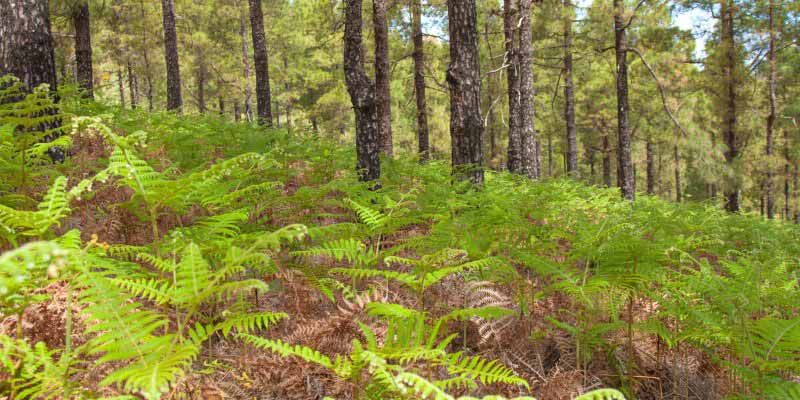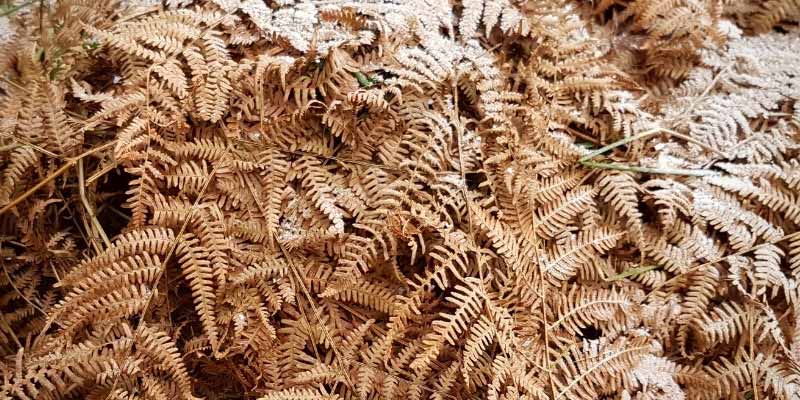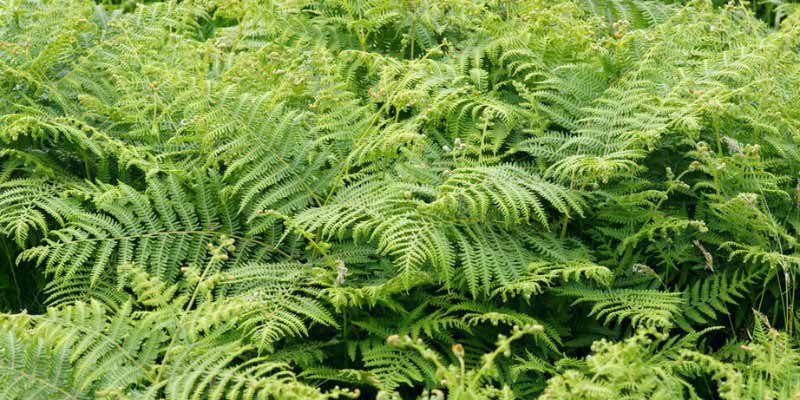Appreciated for their finely divided foliage and natural look, ferns are also very useful in the garden! Their fronds can be harvested to be used as mulch, in manure or for winter protection. They help protect young plants in the garden from cold, drought, parasitic insects and diseases. In manure, they provide a natural alternative to conventional chemical fertilisers, insecticidal and fungicidal products. It is an excellent solution to care for young plants in a way that is both economical and ecological. Discover in this tutorial which ferns to choose and how to use them.
Which ferns to use?
Whether for use in manure, as mulch or for winter protection, fronds harvested in the wild are generally used, particularly those of bracken (Pteridium aquilinum). It forms such large colonies in heathland and in some French forests that it is easy to harvest in large quantities. We advise wearing gloves, however, as its fronds are sharp. You can also use fronds of male fern (Dryopteris filix-mas). Avoid harvesting royal fern, as its collection is regulated and sometimes prohibited. For mulching, any other deciduous fern with large fronds can also be used.

Ferns as mulch
Using fern fronds as mulch is a natural, economical way to protect and feed garden beds. Mulching helps soil retain moisture for longer, reducing frequency of watering, while limiting growth of adventive plants and preventing soil compaction. It keeps soil aerated, allowing air to circulate. Fern fronds can be used fresh or dry. They decompose slowly, allowing nutrients to penetrate the soil. Although ferns generally grow on acidic soil, their fronds do not acidify soil. As they decompose, they provide nitrogen, potassium, phosphorus, silica and calcium. Moreover, fern mulch is an excellent natural insecticidal agent that helps combat pests: carrot fly, cabbage white, slugs… as well as certain fungal diseases such as botrytis. Placed at the base of strawberry plants, fern fronds help prevent grey mould. We recommend roughly chopping the fronds to make them easier to lay in place. Then spread the fern fronds on the soil around your plants to create a mulch layer about 5 to 10 cm thick.

Ferns for winter protection
Ferns can also be used to protect your plants over winter. Lay a thick layer of fronds around your plants to create a protective barrier that will insulate them from frost. You can also use them to line a frost cloth, secure them with mesh around your most tender plants, place them under cloches or overturned pots... Put them in place in autumn, before first frosts. Do not hesitate to cut the fronds to make installation easier. Fern fronds have the advantage of not becoming waterlogged when it rains and of decomposing slowly, providing protection throughout winter.
Fern manure
Fern manure is a natural, ecological alternative to chemical fertilisers for nourishing and protecting your plants. It is usually prepared from bracken fronds (Pteridium aquilinum), but male fern (Dryopteris filix-mas) can also be used. It is rich in minerals and nutrients essential for growth. It is thus an excellent organic fertiliser and also serves as a compost activator. It acts as a repellent against aphids, slugs and snails. It is also effective against certain fungal diseases such as rust and powdery mildew.
We recommend harvesting fronds in summer, between June and August, while they are still green, using a pruning shear. To prepare fern manure, fill a container with water and add chopped fern fronds. Leave the mixture to ferment for about two weeks, stirring daily, before using it to water your plants. Fern manure can also be used as a natural insecticidal spray by applying the mixture directly to infested plants.
To learn more, see our tutorial: “How to make fern liquid manure? Recipe and uses”

Further reading
- Discover our full range of ferns
- Our comprehensive guide to growing ferns
- Our tutorial: "How to make fern liquid manure? Recipe and uses"
- Also discover our article on different organic mulches
































Comments